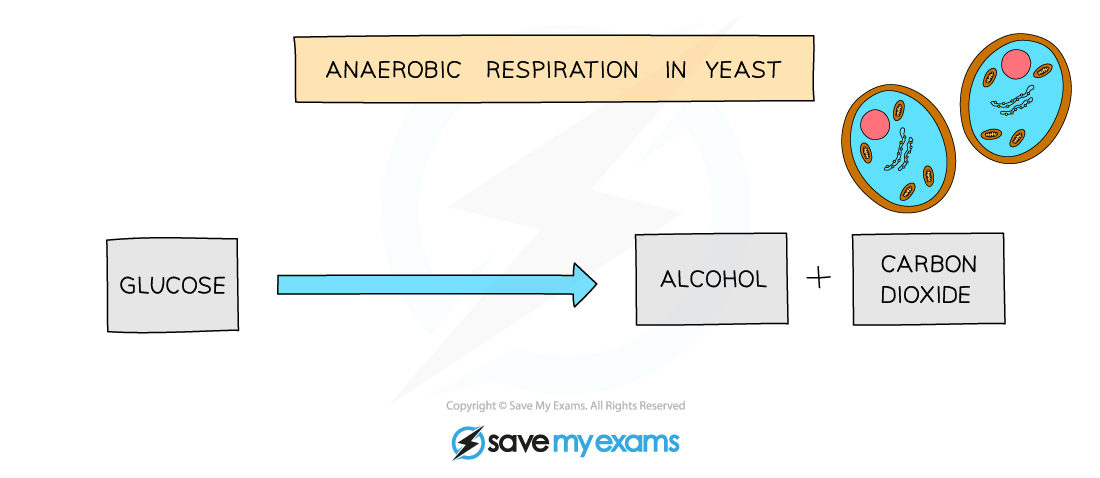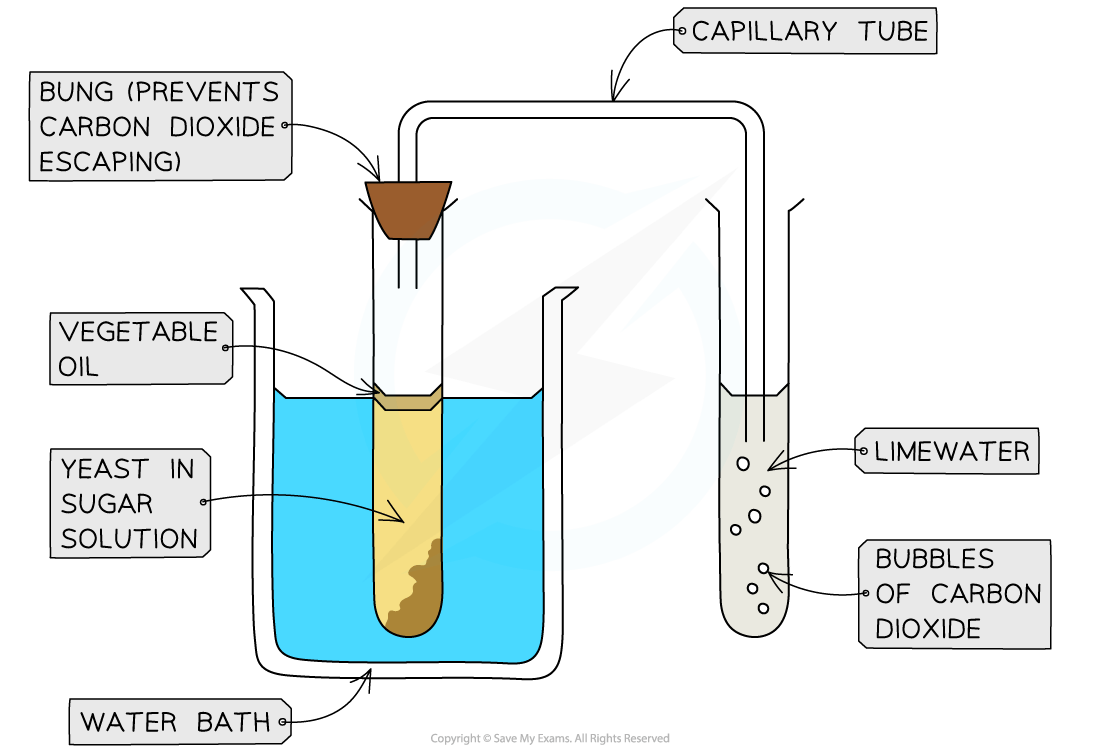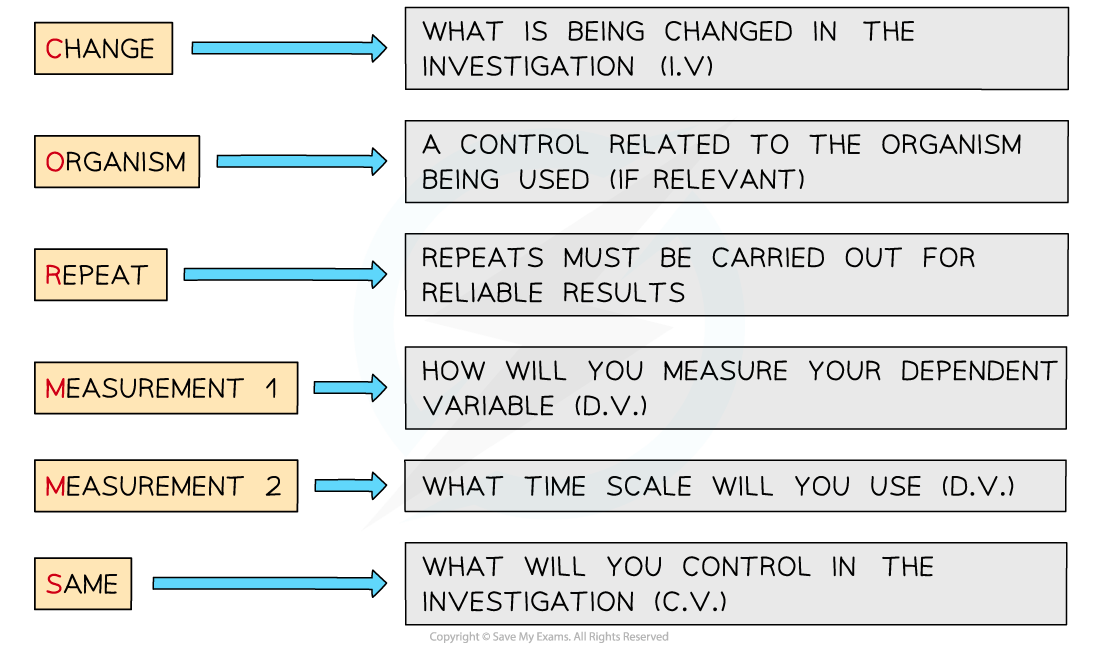Practical: Investigating Anaerobic Respiration in Yeast
- Yeast can respire anaerobically (without oxygen), breaking down glucose in the absence of oxygen to produce ethanol and carbon dioxide
- Anaerobic respiration in yeast cells is called fermentation
- Fermentation is economically important in the manufacture of bread (where the production of carbon dioxide makes dough rise) and alcoholic drinks (as ethanol is a type of alcohol)
- It is possible to investigate the effect of temperature on yeast fermentation, by seeing how temperature affects the rate of anaerobic respiration in yeast

The process of anaerobic respiration in yeast
Apparatus
- Boiling tubes
- Capillary tubes
- Bungs
- Yeast
- Sugar solution
- Oil
- Stopwatch
- Water bath
- Limewater
Method
- Mix yeast with sugar solution in a boiling tube
- The sugar solution provides the yeast with glucose for anaerobic respiration
- Carefully add a layer of oil on top of the solution
- This prevents oxygen from entering the solution (prevents aerobic respiration in the yeast)
- Using a capillary tube, connect this boiling tube with another boiling tube that is filled with limewater
- Place the boiling tube with yeast and sugar solution into a water bath at a set temperature and count the number of bubbles produced in a fixed time (e.g. 2 minutes)
- The rate that carbon dioxide is produced by yeast can be used to measure the rate of anaerobic respiration (i.e. the rate of fermentation)
- Change the temperature of the water bath and repeat

Experimental set up for investigating anaerobic respiration in yeast
Results and Analysis
- Compare results at different temperatures to find out at which temperature yeast respires fastest
- The higher the temperature, the more bubbles of carbon dioxide should be produced as higher temperatures will be closer to the optimum temperature of enzymes in yeast, increasing enzyme activity
- As respiration is an enzyme controlled reaction, as enzyme activity increases, the rate of anaerobic respiration will increase
- If the temperature is too high (beyond the optimum temperature), the enzymes will denature causing carbon dioxide production to slow down and eventually stop
Applying CORMS to practical work
- When working with practical investigations, remember to consider your CORMS evaluation

CORMS evaluation
- In this investigation, your evaluation should look something like this:
- C – We are changing the temperature in each repeat
- O – The type (species) of yeast we are using must be the same
- R – We will repeat the investigation several times at each temperature to make sure our results are reliable
- M1 – We will measure the number of bubbles (of carbon dioxide) produced
- M2 – in a set time period (e.g. 2 minutes)
- S – We will control the concentration, volume and pH of the sugar solution, as well as the mass of yeast added
转载自savemyexams










